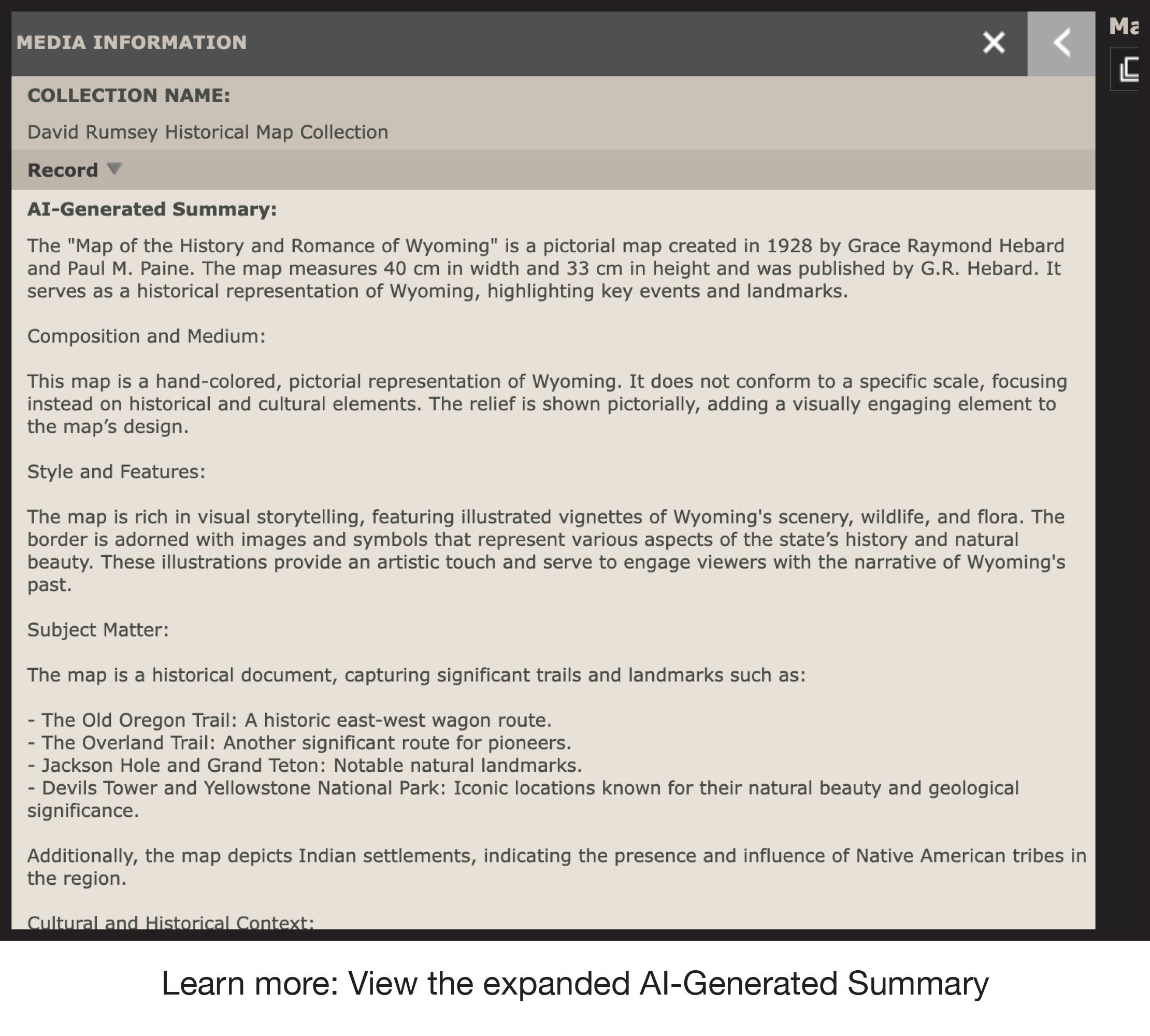User expectations have evolved
While an empty search box may have once opened doors to discovery, we've all become accustomed to seeing the content before activating text on our keyboards. This was LUNA’s strength — as software innovators, we introduced visual browsing to the cultural heritage community. LUNA is known for image browsing as well as more robust search options (keyword and advanced) as well as faceted browsing, data panel discovery, and annotation searching (*see the MRM project). With all of these methods, users are best off if they know what they are looking for, along with an understanding of the material contained within the collection or repository being researched.
Thanks to David Rumsey’s vision, we’ve further expanded LUNA’s discovery potential using AI integration further opening LUNA for discovery with new audiences.
See how LUNA’s AI Search Assist opens new doors to user engagement
LUNA’s AI Search Assist: For Guided Discovery and User Engagement
With the introduction of Search Assist we remove search hurdles and provide users with a more engaging natural language and interactive experience. LUNA’s Search Assist interacts with the collections descriptive data along with AI generated data that further prompts the user to better understand the collection materials while also providing a more informative search experience going beyond fielded metadata.
How did we do it? A mix of Special Sauce and Magic
To achieve this we started by prompting OpenAI to create useful descriptions for all of the images in the map collection. The prompt constructed represents the special sauce that triggers AI to return quality results, Within LUNA, this result is viewable in a field labeled AI-Generated Summary visible when users are in the detail view. This new data is then indexed along with the items original metadata to better inform the users search.
The magic happens when users enter their search query and the results are compiled and combined with AI to better inform the user taking into consideration their learning style or curiosity. A search example might be “Does the collection contain maps related to wars or battles?” and the resulting text may engage the user with ideas for ongoing interactions and future topics along with viewable links to results in LUNA.










